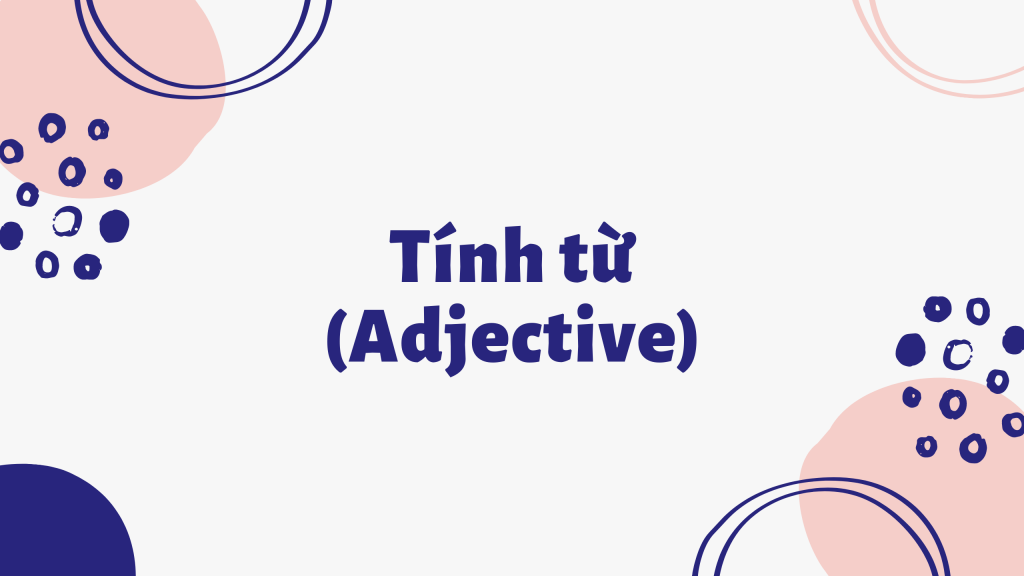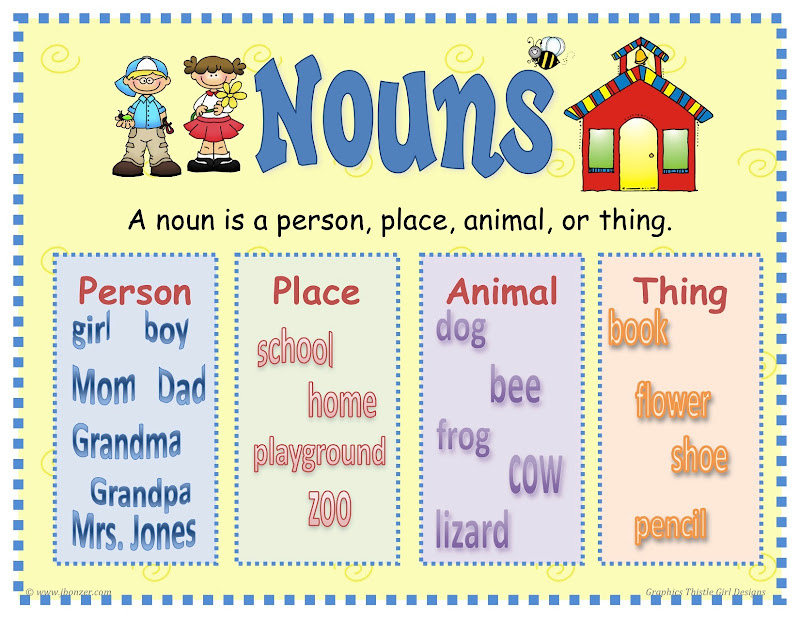Cách nhận biết danh từ, động từ, tính từ, trạng từ trong tiếng Anh là một kiến thức căn bản nhưng không hề đơn giản. Duhoctms.edu.vn nhận thấy có các bạn học anh văn đã lâu năm vẫn gặp trở ngại dưới phân biệt các loại từ. Việc nắm vững kiến thức căn bản chính là tiền đề giúp các bạn có thể học tốt tiếng Anh. Hãy cùng chúng tôi tổng hợp những cách phân biệt mẫu từ và cách sử dụng chúng như thế nào nhé.
1. Cách nhận biết danh từ, động từ, tính từ, trạng từ tiếng Anh
1.1. Tính từ trong tiếng Anh (ADJECTIVE)
Tính từ tiếng Anh thường kết thúc bằng những đuôi sau: -ant, -ent, -ly, -ed. -ing, -ful, -less, -ate, -ive, -ish, -ous, …
1.1. Vị trí của tính từ
- Adj + N (Trước danh từ): beautiful girl, lovely house…
- Tobe + adj (Sau TOBE): I am fat, You are friendly, She is intelligent, …
- Linking verbs + adj (Sau động từ chỉ cảm xúc). Ví dụ: feel, look, become, get, turn, seem, sound, hear…(She feels tired)

- Sau các đại từ bất định. Ví dụ: something, someone, anything, anyone……..(Is there anything new?/ I’ll tell you something interesting)
- Make/Keep/Find/Leave + (O)+ adj. Ví dụ: Let’s keep our school clean
1.2. Dấu hiệu nhận biết
Thường sẽ có các hậu tố (đuôi) là:
- ful: beautiful, careful, useful,peaceful…
- ive: active, attractive, impressive……..
- able: comfortable, miserable…
- ous: dangerous, serious, humorous, continuous, famous…
- cult: difficult…
- ish: selfish, childish…
- ed: bored, interested, excited…
- y: danh từ+ Y thành tính từ: daily, monthly, friendly, healthy…
- al: national, cultural…
1.3. Collocations
- Adj + Prep
| Adj | Prep | Meaning |
| Preferable | to | Phù hợp |
| Related | to | Có liên quan |
| Superior | to | Vượt trội, tốt hơn |
| Capable | of | Có thể |
| Aware | of | Có nhận thức về |
| Suspocious | of | Có nghi ngờ về |
| Hopeful | of | Hy vọng |
| Content | with | Hài lòng với |
| Impressed | with | Ấn tượng về |
| Popular | with | Phổ biến về |
| (Dis)satisfied | with | (ko) hài lòng với |
| Liable | for | Chịu trách nhiệm về |
| Responsible | for | Chịu trách nhiệm về |
| Perfer | for | Hoàn hảo |
| Qualified | for | Đủ điều kiện/Đủ năng lực |
| Eligible | for + N | Đủu điều kiện/Đủ năng lực |
| Eligible | to_V | Điểu điều kiện/Đủ năng lực để làm gì |
| Concerned | about | Quan tâm về |
| Excited | about | Hứng thú về |
| Interested | in | Hứng thú về |
- Adj + N
| Adj | Nouns | Meaning |
| Annual | leave | Nghỉ phép hằng năm |
| Annual | turnover | Doanh thu hằng năm |
| Temporary | staff/worker | Nhân viên thời vụ |
| Temporary | replacement | Sự thay thế tạm thời |
| Temporary | work | Công việc tạm thời |
| Substantial | Increase | Sự tăng lên đáng kể |
| Substantial | renovation | Sự cải tiến/nâng cấp đáng kể |
Xem thêm: Câu điều kiện loại 2
1.2. Danh từ (NOUN)
Vị trí của danh từ
- Sau To be. Ví dụ: I am a student.
- Sau tính từ. Ví dụ: nice school…
- Đầu câu làm chủ ngữ.
- Sau: a/an, the, this, that, these, those…
- Sau tính từ sở hữu. Ví dụ: my, your, his, her, their…
- Sau: many, a lot of/ lots of, plenty of…
- The +(adj) N …of + (adj) N…

Dấu hiệu nhận biết
Danh từ thường sẽ có các hậu tố là:
- tion: nation,education,instruction………
- sion: question, television, impression, passion……..
- ment: pavement, movement, environment….
- ce: difference, independence, peace………..
- ness: kindness, friendliness……
- y: beauty, democracy(nền dân chủ), army…
- er/or: động từ+ er/or thành danh từ chỉ người: worker, driver, swimmer, runner, player, visitor,…
Lưu ý một số tính từ có chung danh từ
- Heavy, light: weight
- Wide, narrow: width
- Deep, shallow: depth
- Long, short: length
- Old, age
- Tall, high: height
- Big, small: size
1.3. Động từ (VERB)
Trong ngữ pháp tiếng Anh, các động từ được chia thành 4 loại sau:
Động từ To be
Động từ tobe, gồm có: be, is, are, was, were, will be, has been, have been, being…
- Tobe + N (I am a student)
- Tobe + V_ing (We are studying English)
- Tobe + V(P2) (English is studied by us)
- Tobe + Adj (She is gorgeous)
- Tobe + Prep + N (The building is under construction)
Modal verbs
- Can/ Could/ May/ Might (Có thể) + V(bare)
- Should (Nên) + V(bare)
- Must/ Have to (Phải) + V(bare)
- Will/ Would (sẽ) + V(bare)
Action verbs
- Review/check/inspect/examine the documents/the plan/the terms of contract: kiểm tra tài liệu/kế hoạch/điều khoản hợp đồng.
- Reserve the right to_V: có quyền làm gì
- Attract visitors/customers…: thu hút du khách
- Introduce/launch new products/services: giới thiệu/tung ra một sản phẩm/dịch vụ mới.
- Represent the company/the organisation/the group: đại diện cho công ty/tổ chức/nhóm
- Sign a contract: ký hợp đồng
- Renew a contract: gia hạn hợp đồng
- Confirm the reservation: xác nhận lại việc đặt chỗ

- Retain the receipts: giữ lại hoá đơn
- Submit s.t TO s.o: nộp một cái gì cho ai
- Attribute s.t to s.o: cho rằng cái gì là nhờ vào ai. Ví dụ minh họa: the company attributes its success to the dedicated employees (Công ty này cho rằng sự thành công của mình là nhờ vào những nhân viên tận tuỵ)
Linking verbs
Một số linking verbs trong tiếng Anh:
- Look: trông
- Seem: dường như
- Feel: cảm thấy
- Become = get: trở nên
- Appear: dường như
- Taste, smell, stay = remain (giữ),…
- Note: Lining verbs + Adj. Ví dụ: She looks goregeous.
1.4. Trạng từ (ADVERB)
Dấu hiệu nhận biết trạng từ
Trạng từ chỉ thể cách (adverbs of manner): adj+’ly’ adv. Ngoại lệ các trường hợp sau:
- Từ có đuôi _ly nhưng là tính từ (adj) như: daily, friendly, weekly, monthely, yearly, quarterly (hàng quý),…
- Từ không có đuôi _ly nhưng lại là trạng từ tiếng Anh như: fast, hard, late, near, …
Vị trí của trạng từ trong câu
- V + adv. Ví dụ: We study hard
- Adv + V. Ví dụ: I really like you
- Adv + adv. Ví dụ: We work with our team very well
- Adv + adj. Ví dụ: I am very responsible
- Adv, S-V. Ví dụ: Luckily, we won the lottery.
2. Bài tập về từ loại trong tiếng Anh
Bài tập
Bài tập 1. Choose the correct answer
1. John cannot make a _______ to get married to Mary or stay single until he can afford a house and a car.
a. decide
b. decision
c. decisive
d. Decisively
2. She often drives very ________ so she rarely causes accident.
a. carefully
b. careful
c. caring
d. Careless
3. All Sue’s friends and __________ came to her party.
a. relations
b. Relatives
c. relationship
d. Related
4. My father studies about life and structure of plants and animals. He is a ……….
a. biology
b. biologist
c. biological
d. biologically
5. She takes the …….. for running the household.
a. responsibility
b. responsible
c. responsibly
d. responsiveness.

6. We are a very close-knit family and very ….. of one another.
a. supporting
b. supportive
c. support
d. supporter
7. You are old enough to take _______ for what you have done.
a. responsible
b. responsibility
c. responsibly
d. irresponsible
8. He has been very interested in doing research on _______ since he was at high school.
a. biology
b. biological
c. biologist
d. biologically
9. Although they are twins, they have almost the same appearance but they are seldom in __.
a. agree
b. agreeable
c. agreement
d. Agreeably
10. The more _______ and positive you look, the better you will feel.
a. confide
b. confident
c. confidently
d. Confidence
11. My parents will have celebrated 30 years of _______ by next week.
a. marry
b. married
c. marriageable
d. marriage
12. London is home to people of many _______ cultures.
a. diverse
b. diversity
c. diversify
d. diversification
13. Some people are concerned with physical ______ when choosing a wife or husband.
a. attractive
b. attraction
c.attractiveness
d.attractively
14. Mrs. Pike was so angry that she made a _______ gesture at the driver.
a. rude
b. rudeness
c. rudely
d. rudest
15. She sent me a _______ letter thanking me for my invitation.
a. polite
b. politely
c. politeness
d. impoliteness
16. He is unhappy because of his ————–.
a. deaf
b. deafen
c. deafness
d. Deafened
17. His country has ————– climate.
a. continent
b. continental
c. continence
d. Continentally
18. She has a ————– for pink.
a. prefer
b. preferential
c. preferentially
d. Preference
19. Computers are ————– used in schools and universities.
a. widely
b. wide
c. widen
d. Width
20. I sometimes do not feel ————– when I am at a party.
a. comfort
b. comfortable
c. comforted
d. Comfortably
21. English is the language of ————–.
a. communicative
b. communication
c. communicate
d. communicatively
22. I have to do this job because I have no ————–.
a. choose
b. choice
c. choosing
d. Chosen
23. English is used by pilots to ask for landing ————– in Cairo.
a. instruct
b. instructors
c. instructions
d. Instructive
24. He did some odd jobs at home ————–.
a. disappointment
b. disappoint
c. disappointed
d. Disappointedly
25. Don’t be afraid. This snake is ————–.
a. harm
b. harmful
c. harmless
d. Unharmed
26. During his ————–, his family lived in the United State.
a. child
b. childhood
c. childish
d. Childlike
27. Jack London wrote several ————– novels on an adventure.
a. interest
b. interestedly
c. interesting
d. interested
28. He failed the final exam because he didn’t make any ————– for it.
a. prepare
b. preparation
c. preparing
d. Prepared
29. The custom was said to be a matter of ————–.
a. convenient
b. convenience
c. conveniently
d. Convene
30. She is ————– in her book.
a. absorbed
b. absorbent
c. absorptive
d. Absorb
Đáp án
| 1 – b | 2 – a | 3 – b | 4 – b | 5 – a | 6 – b | 7 – b | 8 – a | 9 – c | 10 – b |
| 11 – d | 12 – c | 13 – b | 14 – a | 15 – a | 16 – c | 17 – b | 18 – d | 19 – a | 20 – b |
| 21 – b | 22 – b | 23 – c | 24 – d | 25 – c | 26 – b | 27 – c | 28 – b | 29 – b | 30 – a |
Cách nhận biết danh từ, động từ, tính từ, trạng từ là một phần kiến thức ngữ pháp cơ bản trong tiếng Anh. Và trong các bài thi IELTS như IELTS Writing task 1, IELTS Writing task 2 việc sử dụng đúng các kiến thức ngữ pháp cơ bản là điều tối thiểu. Vì vậy hãy ôn luyện thường xuyên nhé
Như vậy duhoctms.edu.vn vừa chia sẻ đến các bạn kiến thức rất cơ bản về Cách nhận biết danh từ, động từ, tính từ, trạng từ trong tiếng Anh. Hi vọng các bạn sẽ có thêm được những kiến thức bổ ích cho bản thân.

Bình luận